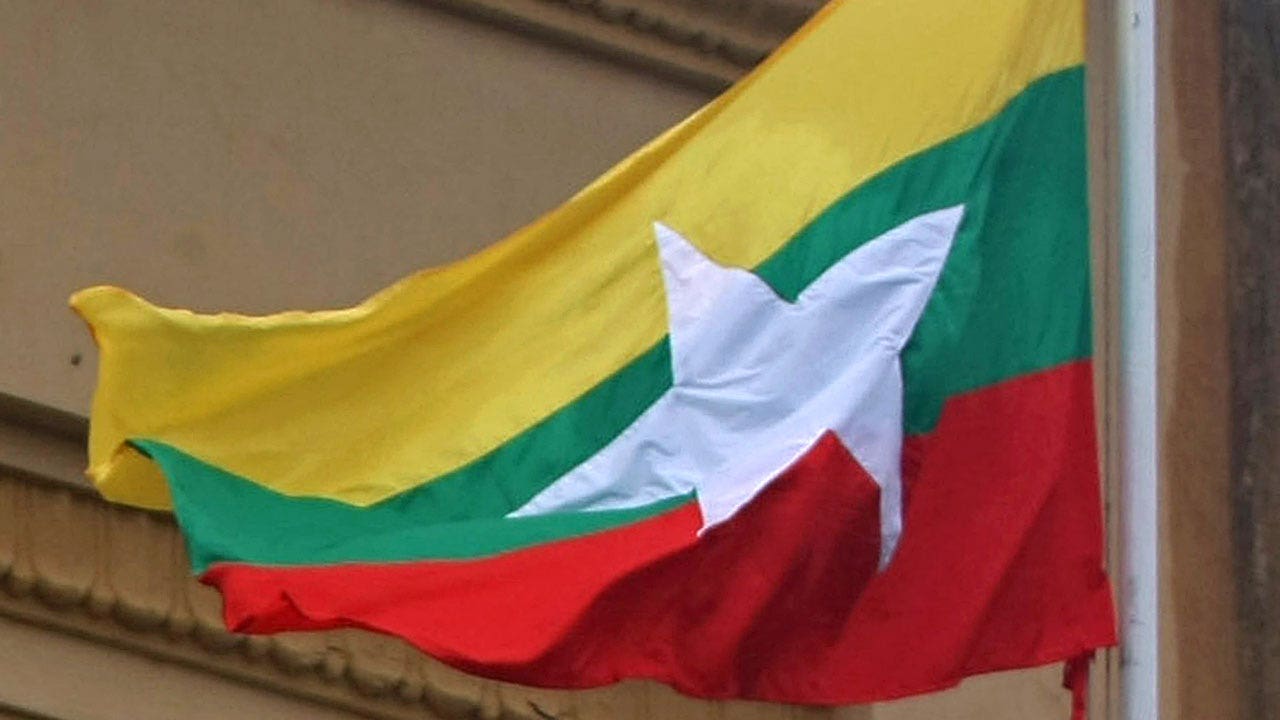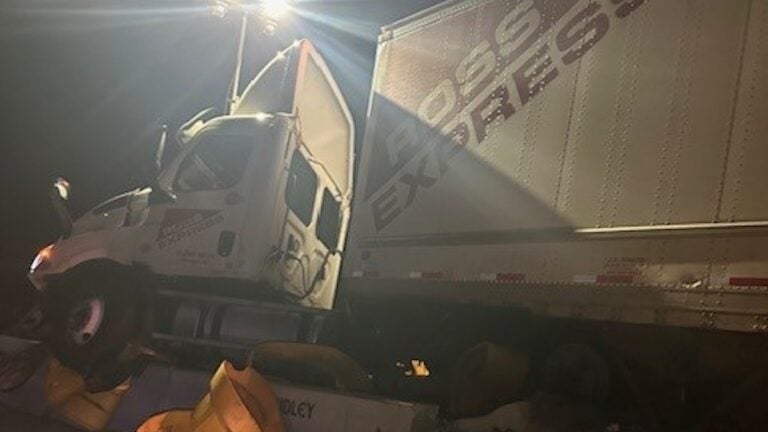World
Robots and happy workers: Productivity surge helps explain US economy's surprising resilience
WASHINGTON (AP) — Trying to keep up with customer demand, Batesville Tool & Die began seeking 70 people to hire last year. It wasn’t easy. Attracting factory workers to a community of 7,300 in the Indiana countryside was a tough sell, especially having to compete with big-name manufacturers nearby like Honda and Cummins Engine.
Job seekers were scarce.
“You could count on one hand how many people in the town were unemployed,” said Jody Fledderman, the CEO. “It was just crazy.’’
Batesville Tool & Die managed to fill just 40 of its vacancies.
Enter the robots. The company invested in machines that could mimic human workers and in vision systems, which helped its robots “see” what they were doing.
The Batesville experience and others like it have been replicated countlessly across the United States for the past couple of years. Chronic worker shortages have led many companies to invest in machines to do some of the work they can’t find people to do. They’ve also been training the workers they do have to use advanced technology so they can produce more with less.
The result has been an unexpected productivity boom, which helps explain a great economic mystery: How has the world’s largest economy managed to remain so healthy, with brisk growth and low unemployment, despite brutally high interest rates that are intended to tame inflation but that typically cause a recession?
A Halter robot collects a finished piece for blood pressure pumps from a Mazak Integrex at Reata Engineering and Machine Works Thursday, Feb. 15, 2024, in Englewood, Colo. (AP Photo/David Zalubowski)
To economists, strong productivity growth provides an almost magical elixir. When companies roll out more efficient machines or technology, their workers can become more productive: They increase their output per hour. A result is that companies can often boost their profits and raise their employees’ pay without having to jack up prices. Inflation can remain in check.
Austan Goolsbee, president of the Federal Reserve Bank of Chicago, has likened surging productivity to “magic beanstalk beans for the economy. … You can have faster income increases, faster wage growth, faster GDP without generating inflation.’’
Joe Brusuelas, chief economist at the tax and consulting firm RSM, said, “The last time we saw anything like this was the late 1990s.”
That was when a productivity surge — an early payoff from the sudden embrace of laptops, cellphones and the internet — helped allow the Federal Reserve to keep borrowing rates low because inflation remained under control even as the economy and the job market sizzled.
A worker at Reata Engineering and Machine Works programs a Mazak Variaxis machine used to make semiconductor pieces, Thursday, Feb. 15, 2024, in Englewood, Colo. (AP Photo/David Zalubowski)
This time, the Fed’s aggressive streak of rate hikes — 11 of them starting in March 2022 — has managed to help cool inflation from a four-decade high of 9.1% to 3.1% while causing little economic hardship.
“I would have said it’s not possible,’’ said Sal Guatieri, senior economist at BMO Capital Markets. “But that’s exactly what happened.’’
A year ago, nearly every economist was warning that a recession was all but inevitable. Fed Chair Jerome Powell himself warned in 2022 that beating inflation would inflict “some pain” in the form of widespread layoffs and higher unemployment.
By last month, Powell was sounding a different note. With unemployment barely above a half-century low, the Fed chair told reporters, “We’ve had a very strong labor market, and we’ve had inflation coming down.”
He did caution that the central bank wants to see further progress in slowing inflation. Yet the Fed is so optimistic that inflation is heading toward its 2% goal that it hasn’t raised rates since July and is expected to cut rates multiple times this year.
A box of parts for blood plasma pumps sits ready for shipping from Reata Engineering and Machine Works Thursday, Feb. 15, 2024, in Englewood, Colo. (AP Photo/David Zalubowski)
Perhaps the likeliest explanation is the greater efficiencies that companies like Batesville Tool & Die have managed to achieve in the past year or so. Before productivity began its resurgent growth last year, a rule of thumb was that average hourly pay could rise no more than 3.5% annually for inflation to stay within the Fed’s 2% target. That would mean that today’s roughly 4% average annual pay growth would have to shrink. Yet higher productivity has changed that equation: There’s now more leeway for wage growth to stay elevated without igniting inflation.
“A lot of that pressure on business finances — that normally causes them to raise prices — has been offset by strong productivity growth,’’ Guatieri said.
At a news conference this month, Powell was asked whether he believed higher productivity helps explain why the economy has kept growing steadily even while inflation has tumbled.
“That’s one way to look at it — yeah,” Powell replied.
The productivity boom marks a sharp shift from the pre-pandemic years, when annual productivity growth averaged around a tepid 1.5%, according RSM’s calculations. Everything changed as the economy rocketed out of the 2020 pandemic recession with unexpected vigor, and businesses struggled to re-hire the many workers they had shed.
The resulting worker shortage sent wages surging. Inflation jumped, too, as factories and ports buckled under the strain of rising consumer orders. Parts shortages arose.
Desperate, many companies turned to automation. Investment in equipment and in research and development and other forms of intellectual property accelerated. The efficiency payoff began to arrive almost a year ago. Labor productivity rose at a 3.6% annual pace from last April through June, 4.9% from July through September and 3.2% from October through December.
At Reata Engineering & Machine Works, “efficiency was kind of forced on us,’’ CEO Grady Cope said. With the job market roaring, the company, based in Englewood, Colorado, couldn’t hire fast enough. Meantime, its customers were starting to balk at paying higher prices.
Semiconductor pieces sit in a shipping box as they are produced in a Mazak Variaxis machine at Reata Engineering and Machine Works Thursday, Feb. 15, 2024, in Englewood, Colo. (AP Photo/David Zalubowski)
So Reata installed robots and other technology to produce more with less. Software allowed it to automate the delivery of price quotes to customers. That process used to require two weeks. Now, it can be done in 24 hours.
Many economists and business people say they’re hopeful, if not certain, that the productivity boom can continue. Artificial intelligence, they note, is only beginning to penetrate factory floors, warehouses, stores and offices.
“Right now, AI is not a critical enabler for us; it’s an assistant and accelerator in certain roles,’’ said Peter Doyle, CEO of Hirsh Precision, which makes parts for the aerospace and medical device industries. “The world is still trying to understand what AI is capable of doing and how quickly it will advance.’’
The early evidence suggests that AI could sustain the productivity gains. A study last year by Erik Brynjolfsson of Stanford University and Danielle Li and Lindsey Raymond of the Massachusetts Institute of Technology tracked 5,200 customer-support agents at a Fortune 500 company who used a generative AI-based assistant in 2020 and 2021. The AI tool provided suggestions for dealing with customers and links to useful internal documents.
Those using the chatbot were found to be 14% more productive than colleagues who didn’t use the tool. They handled more calls and completed them faster. The biggest gains in productivity — 34% — came from the least-experienced, least-skilled workers.
Automation tends to raise fears that machines will replace human workers and thereby kill jobs. Some workers supplanted by robots do often struggle to find new work and end up settling for lower pay.
Yet history suggests that in the long run, technological improvements actually create more jobs than they destroy. People are needed to build, upgrade, repair and operate sophisticated machines. Some displaced workers are trained to shift into such jobs. And that transition is likely to be eased this time by the retirement of the vast baby boom generation, which is causing labor shortages.
Some of today’s productivity gains may be coming not just from advanced technology but also from more satisfied workers. The tight labor markets of the past three years allowed Americans to change jobs and find others that pay better and make them happier and more productive.
One of them was Justin Thompson, of Kalamazoo, Michigan, who had felt burned out by his job as a police officer, with its 16-hour workdays .
“I was literally running myself into the ground,’’ he said.
Thompson’s wife saw a job posting for operations manager at a charter airline. Even without airline experience, his wife felt he could use skills he gains as a Marine Corps infantryman — handling logistics for missions — during tours in Iraq and Afghanistan.
She was right. Omni Air International hired him in 2019.
Thompson, 43, said he he loves the new job, which allows him to work from home when he’s not traveling. And his Marine experience — which included developing ways to improve efficiency — has proved invaluable. Technology helps, too: Thompson travels with a laptop, iPad and mobile printer and uses proprietary software to manage logistics.
Other workers have switched from low-skill jobs to those that pay better and are more productive.
“The people who were rolling tacos on Dec. 31, 2019 … yeah, they’ve moved up,’’ RSM’s Brusuelas said. “They’re doing other things and making a lot more money.”
At Reata Engineering, staffers were trained to use new sophisticated equipment. One 19-year-old employee, a university engineering student, has used AI tools to make company training materials less cumbersome and time-consuming.
“The whole point is not to lay people off,’’ said Cope, the CEO of Reata Engineering. “The point is to make people do jobs that are more interesting’’ — and pay better, too.

World
Middle East Crisis: Israel Steps Up Attacks on Rafah as Hamas Shifts Position on Cease-fire
Israeli’s war cabinet voted to continue the military assault on Hamas and Israeli forces carried out strikes in Gaza’s southernmost city, hours after Hamas said it would accept terms based on a cease-fire proposal put forward by mediators.
World
Rebel group claims it captured Burmese command post, imprisoned hundreds of government soldiers

- The Arakan Army, a prominent and powerful ethnic rebel group combating Burma’s military junta, claims it has taken hundreds of soldiers prisoner after seizing Operational Command No. 15 headquarters in Buthidaung.
- Rebel forces have made significant advances against the military-run government, helmed by Min Aung Hlaing, in recent months.
- Hlaing’s forces have ruled over Burma since a successful 2021 coup ousted the government of democratically-elected State Counselor Aung San Suu Kyi.
A powerful ethnic minority armed group battling Burma’s army in the country’s west claimed Monday to have taken hundreds of government soldiers prisoner when it captured a major command post.
The Arakan Army, the well-trained and well-armed military wing of the Rakhine ethnic minority movement, has been on the offensive against army outposts in the western state of Rakhine — its home ground — for about six months.
The group said in a video statement posted on the Telegram messaging app that soldiers belonging to the military government’s Operational Command No. 15 headquarters in Rakhine’s Buthidaung township surrendered after a siege.
ETHNIC KAREN GUERRILLA FIGHTERS WITHDRAW FROM BURMESE BORDER TOWN ARMY LOST 2 WEEKS AGO
Buthidaung is about 240 miles southwest of Mandalay, Burma’s second-largest city.
The reported capture of the base could not be independently confirmed. Burma’s military government made no immediate comment, and the spokesperson of the Arakan Army did not respond to questions sent by The Associated Press.
The fight in Rakhine is part of the nationwide conflict in Burma that began after the army ousted the elected government of Aung San Suu Kyi in February 2021 and suppressed widespread nonviolent protests that sought a return to democratic rule.
Despite its advantages in arms and manpower, Burma’s army has been on the defensive since October, when an alliance of three ethnic rebel groups launched an offensive in the country’s northeast.
This image depicts the Burmese flag. (Photo by SOE THAN WIN/AFP via Getty Images)
The video released by the Arakan Army was described as having been made Saturday. It shows Arakan Army fighters guarding men in military uniforms and civilian clothes, some injured, as they walk through a field and down a roadside accompanied by women and children — families of soldiers often live at their posts.
A caption accompanying the video says it shows the deputy commander of the group and his troops after a “final assault in which (they) faced total defeat and surrendered.”
The video does not specify the total number of captured soldiers and their family members, but in one part about 300 men can be seen sitting in rows in an open field.
In a statement released Sunday, the Arakan Army said it captured the command post Thursday after attacking it for two weeks. It claimed another army post was seized the next day, along with others over the past two months.
The attackers captured “weapons, ammunition, military equipment and surrendered prisoners of war,” the statement said.
Some parts of the video released Monday show young men who appear to be members of the Muslim Rohingya minority.
Burma’s military has been accused of filling its depleted ranks with Rohingya men in Rakhine under the recently activated conscription law. The army has lost personnel to casualties, surrender and defections while facing increasingly tough opposition on the battlefield.
The Rohingya were the targets of a brutal counterinsurgency campaign incorporating rape and murder that saw an estimated 740,000 flee to neighboring Bangladesh as their villages were burned down by the army in 2017.
Ethnic Rakhine nationalists aligned with the Arakan Army were also among the persecutors of the Rohingya minority, but now the Arakan Army and the Rohingya are uneasy allies in opposition to the military government.
The Arakan Army, which seeks autonomy from Burma’s central government, is part of an alliance of ethnic minority armies that launched an offensive in October and gained strategic territory in Burma’s northeast bordering China.
Its success was seen as a major defeat for the military government, and boosted the morale of restive ethnic minorities as well as the pro-democracy resistance.
On Sunday, the Kachin Independence Army, another major ethnic armed group, claimed to have captured Sumprabum, a township in the northern state of Kachin.
World
Text of the Gaza ceasefire proposal approved by Hamas

Al Jazeera has obtained a copy of the Gaza ceasefire proposal that Hamas said it accepted on Monday. The deal, which was put forward by Egypt and Qatar, would come in three stages that would see an initial halt in the fighting leading to lasting calm and the withdrawal of Israeli troops from the Palestinian territory.
The proposed agreement would also ensure the release of Israeli captives in Gaza as well as an unspecified number of Palestinians held in Israeli jails.
Israel has said that it does not agree to the proposal but that it will engage in further talks to secure an agreement – all while pushing on with its assault on Gaza.
Meanwhile, the United States, which is also involved in the negotiations, said it is reviewing the Hamas response.
Here’s the text of the proposed deal:
The basic principles for an agreement between the Israeli side and the Palestinian side in Gaza on the exchange of captives and prisoners between them and the return of sustainable calm.
The framework agreement aims at: The release of all Israeli captives in the Gaza Strip, civilians or military, alive or otherwise, from all periods, in exchange for a number of prisoners held by Israel as agreed upon, and a return to a sustainable calm that leads to a permanent ceasefire and a withdrawal of Israeli forces from the Gaza Strip, its reconstruction and the lifting of the siege.
The framework agreement consists of three related and interconnected stages, which are as follows:
The first stage (42 days)
[Herein] a temporary cessation of military operations between the two parties, and the withdrawal of Israeli forces eastward and away from densely populated areas to a defined area along the border all along the Gaza Strip (including Wadi Gaza, known as the Netzarim Corridor, and Kuwait Roundabout, as below).
All aviation (military and reconnaissance) in the Gaza Strip shall cease for 10 hours a day, and for 12 hours on the days when captives and prisoners are being exchanged.
Internally displaced people in Gaza shall return to their areas of residence and Israel shall withdraw from Wadi Gaza, the Netzarim corridor, and the Kuwait Roundabout:
- On the third day (after the release of three captives), Israeli forces are to withdraw completely from al-Rashid Street in the east to Salah al-Din Street, and dismantle military sites and installations in this area.
- Displaced persons (unarmed) shall return to their areas of residence and all residents of Gaza shall be allowed freedom of movement in all parts of the Strip.
- Humanitarian aid shall be allowed in via al-Rashid Street from the first day without any obstacles.
- On the 22nd day (after the release of half the living civilian captives in Gaza, including female soldiers), Israeli forces are to withdraw from the centre of the Gaza Strip (especially the Netzarim/Martyrs Corridor and the Kuwait Roundabout axis), from the east of Salah al-Din Street to a zone along the border, and all military sites and installations are to be completely dismantled.
- Displaced people shall be allowed to return to their places of residence in the north of Gaza, and all residents to have freedom of movement in all parts of the Gaza Strip.
- Humanitarian aid, relief materials and fuel (600 trucks a day, including 50 fuel trucks, and 300 trucks for the north) shall be allowed into Gaza in an intensive manner and in sufficient quantities from the first day. This is to include the fuel needed to operate the power station, restart trade, rehabilitate and operate hospitals, health centres and bakeries in all parts of the Gaza Strip, and operate equipment needed to remove rubble. This shall continue throughout all stages.
Exchange of captives and prisoners between the two sides:
During the first phase, Hamas shall release 33 Israeli captives (alive or dead), including women (civilians and soldiers), children (under the age of 19 who are not soldiers), those over the age of 50, and the sick, in exchange for a number of prisoners in Israeli prisons and detention centres, according to the following [criteria]:
- Hamas shall release all living Israeli captives, including civilian women and children (under the age of 19 who are not soldiers). In return, Israel shall release 30 children and women for every Israeli detainee released, based on lists provided by Hamas, in order of detention.
- Hamas shall release all living Israeli captives (over the age of 50), the sick, and wounded civilians. In return, Israel shall release 30 elderly (over 50) and sick prisoners for every Israeli captive, based on lists provided by Hamas, in order of detention.
- Hamas shall release all living Israeli female soldiers. In return, Israel shall release 50 prisoners (30 serving life sentences, 20 sentenced) for every Israeli female soldier, based on lists provided by Hamas.
Scheduling the exchange of captives and prisoners between the parties in the first stage:
- Hamas shall release three Israeli detainees on the third day of the agreement, after which Hamas shall release three other detainees every seven days, starting with women as much as possible (civilians and female soldiers). In the sixth week, Hamas shall release all remaining civilian detainees included in this phase. In return, Israel shall release the agreed-upon number of Palestinian prisoners, according to lists Hamas will provide.
- Hamas will provide information about the Israeli detainees who will be released at this stage by the seventh day (if possible).
- On the 22nd day, the Israeli side shall release all prisoners from the Shalit deal who have been re-arrested.
- If there are fewer than 33 living Israeli detainees to be released, a number of bodies from the same categories shall be released to complete this stage. In return, Israel will release all women and children who were arrested from the Gaza Strip after October 7, 2023 – provided this is done in the fifth week of this stage.
- The exchange process is linked to the extent of commitment to the agreement, including the cessation of military operations, the withdrawal of Israeli forces, the return of displaced persons, as well as the entry of humanitarian aid.
- All necessary legal procedures to ensure that freed Palestinian prisoners are not re-arrested on the same charges are to be completed.
- The steps of the first stage above do not constitute a basis for negotiating the second stage. Punitive measures and penalties that were taken against prisoners and detainees in Israeli prisons and detention camps after October 7, 2023, are to be lifted and their conditions improved, including individuals who were arrested after this date.
- No later than the 16th day of the first phase, indirect talks will begin between the parties to agree on the details of the second phase of this agreement, with regard to the exchange of prisoners and captives from both parties (soldiers and remaining men), provided that they are completed and agreed upon before the end of the fifth week of this stage.
The United Nations and its agencies, including UNRWA, and other international organisations, are to continue providing humanitarian services across the Gaza Strip. This shall continue throughout all stages of the agreement.
Infrastructure (electricity, water, sewage, communications and roads) across the Gaza Strip shall be rehabilitated, and the equipment needed for civil defence allowed into Gaza to clear rubble and debris. This shall continue throughout all stages of the agreement.
All necessary supplies and equipment to shelter displaced people who lost their homes during the war (a minimum of 60,000 temporary homes – caravans – and 200,000 tents) shall be allowed into Gaza.
Throughout this phase, an agreed-upon number (not fewer than 50) of wounded military personnel will be allowed to travel through the Rafah crossing to receive medical treatment, and an increased number of travellers, sick and wounded, shall be allowed to leave through the Rafah crossing as restrictions on travellers are lifted. The movement of goods and trade will return without restrictions.
The necessary arrangements and plans shall be put in place for the reconstruction of homes, civilian facilities, and civilian infrastructure that was destroyed due to the war, as well as arrangements to compensate those affected, under the supervision of a number of countries and organisations, including: Egypt, Qatar, and the United Nations.
All measures in this stage, including the temporary cessation of military operations, relief and shelter, withdrawal of forces, etc., shall continue in the second stage until a sustainable calm (cessation of military and hostile operations) is declared.
The second stage (42 days):
A return to sustainable calm (a permanent cessation of military and hostile operations) must be announced and take effect before the exchange of captives and prisoners – all remaining living Israeli men (civilians and soldiers) in exchange for an agreed-upon number of prisoners and detainees in Israeli prisons and detention camps.
Israeli forces shall withdraw completely from the Gaza Strip.
The third stage (42 days):
An exchange of the bodies and remains of the dead on both sides after they have been retrieved and identified.
The reconstruction plan for the Gaza Strip over a period of three to five years – including homes, civilian facilities, and infrastructure – and compensating all those affected begins, under the supervision of several countries and organisations, including: Egypt, Qatar and the United Nations.
A complete end to the siege of the Gaza Strip.
Guarantors of the agreement:
Qatar, Egypt, the United States, and the United Nations.
May 5, 2024
-

 News1 week ago
News1 week agoBoth sides prepare as Florida's six-week abortion ban is set to take effect Wednesday
-

 Politics1 week ago
Politics1 week agoColumbia University’s policy-making senate votes for resolution calling to investigate school’s leadership
-

 Politics1 week ago
Politics1 week agoGOP Rep. Bill Posey won't seek re-election, endorses former Florida Senate President as replacement
-

 World1 week ago
World1 week agoBrussels, my love? MEPs check out of Strasbourg after 5 eventful years
-

 World1 week ago
World1 week agoRussian forces gained partial control of Donetsk's Ocheretyne town
-

 Politics1 week ago
Politics1 week agoHouse Republicans brace for spring legislative sprint with one less GOP vote
-

 World1 week ago
World1 week agoAt least four dead in US after dozens of tornadoes rip through Oklahoma
-

 Politics1 week ago
Politics1 week agoAnti-Trump DA's no-show at debate leaves challenger facing off against empty podium
















